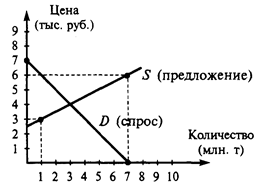Interrelation links
a) simple paraphrase which occurs whenever a lexical item may substitute another item in context with no important change in meaning. Here belong most of the contextual synonyms, e.g. produce – cause; statesman – politician; book – volume; works – writings; killings – executions; викликати – спричиняти; робота – праця; особа – людина, etc);
b) complex paraphrase which occurs when one of the lexical items includes the other, although they may share no lexical morpheme. Here, first of all, belong the majority of antonyms, e.g. happy – unhappy; hot – cold; dry – wet; холодний – гарячий; день – ніч; гарно – погано; стояти – лежати. Secondly, complex paraphrase occurs when an item is a complex lexical repetition of another item (e.g. writer – writings) and also a simple paraphrase of a third item (e.g. writer – author). In this case a complex paraphrase link is established between the second and the third items (writings – author). This link is called “a link triangle” [Hoey 1991: 64-65].
c) co - reference repetition occurs when two items are interpreted as having the same referent, i.e. refer to the same object of the real world (denotatum)in the given context. Examples are: scientists – biologists; Tony Blair – British Prime Minister (in the context of spring 2007); Augustus – the Emperor (in the ancient context as a historical figure of ancient Rome at the time of writing); Віктор Ющенко – Президент України (in the context of 2007).
d) substitution occurs when certain grammatical words (службові слова), such as pronouns, adverbs, adjectives, etc (e.g. he, she, they, it, we, this, that, the first one, another one, the same, different, similar, він, вона, воно, ми, це, вищезгаданий, etc) are substituted for lexical items. Examples are: citizens – they; students – we; Президент – він; жінка – вона; явище – воно).
Michael Hoey [1991: 69-75, 87] mentions also other types of repetition, such as superordinate, hyponymic repetition, repetition due to ellipsis. However, their role in ensuring semantic redundancy of oral discourse is secondary. Semantic redundancy of oral discourse provides not only for successful transmission of maximum of information in the process of communication but also for filling in the “informational gaps” in oral consecutive and simultaneous interpretation as it is illustrated by the analysis of the transcripts of the TV news items given below where repetition and interrelation links between sentences as well as exophoric relationships of lexical items with the macro context are shown:
(1) After 60 years in exile Tsar *Alexis the Third is back in St. Petersburg. (2) The monument to the father of the last Tsar Nicholas theSecond was brought back to one of the city’s most prominent sites – the square in front of the Winter Palace. (3) The monument was erected and officially unveiled by Tsar Nicholas the Second in 1909. (4) It was destroyed by Communist regime in 1937 and lay discarded in the yard of the Russian Museum until the St. Petersburg’s City Council decided to bring it back to it s former glory. EuroNews, http://www.euronews.net
Analysis of the example:
BBC World, http://www.bbcworld.com Analysis of the example:
|

 (2) The most famous square in Brussels and in all Belgium is the magnificent Grand- Place. (2) True! (3) The peopleof Brussels are proud of their superior French -style cuisine. (4) Bien sûr! (5) And they all speak French. (6) False! (7) Brussels, the headquarters of both NATO and European Union, is also officially the bilingual capital of Belgium, a country whose two communities speak French and Dutch. (8) Brussels is about to be fated as one of the Europe's cultural capitals for the year 2000 but the Flemishcommunity there is unhappy. (9) Some of theirleaders say their language and culture are drowned out. (10) They worry that they will lose political influence as well in local elections later this year in which all EU citizens will have the right to vote.
(2) The most famous square in Brussels and in all Belgium is the magnificent Grand- Place. (2) True! (3) The peopleof Brussels are proud of their superior French -style cuisine. (4) Bien sûr! (5) And they all speak French. (6) False! (7) Brussels, the headquarters of both NATO and European Union, is also officially the bilingual capital of Belgium, a country whose two communities speak French and Dutch. (8) Brussels is about to be fated as one of the Europe's cultural capitals for the year 2000 but the Flemishcommunity there is unhappy. (9) Some of theirleaders say their language and culture are drowned out. (10) They worry that they will lose political influence as well in local elections later this year in which all EU citizens will have the right to vote.


